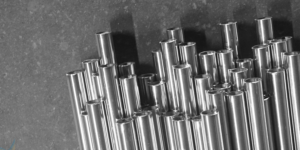The stainless steel woven mesh industry has undoubtedly witnessed considerable creativity and development over the last few decades. Whether it’s weaving patterns, new alloys, or intelligence integration into the material, mesh products are being reinvented to be more robust, sustainable, and meet unknown future requirements. They are seen to be setting the pace for the development of future mesh solutions across different domains.
Advancements in Weaving Techniques
The process of weaving mesh has evolved over several years with the development of automated sophisticated machines, different intricate wire patterns and the kind of weaving techniques used. Some of the standard structural fabrics are woven fabrics that include double weaving and triple weaving, which join wires to form robust meshes that are not easily corroded. The difference between double Dutch weave and reverse Dutch weave is that they offer multiaxial strength and modulus characteristics for a particular application in various industries.

Computer-controlled weaving enables other complex wire patterns, such as Keper weaves and mock Leno weaves, to be integrated to achieve specified optical, filtration, or load-bearing characteristics. Servo motor technology and specifically designed software are incorporated into the weaving looms for the best weaves for complicated patterns. Further, the use of AI and ML to integrate is improving precision weaving advantages.
New Materials and Alloys
The pace of mesh innovation is set to advance due to the discovery of new materials and alloys with higher potential and product durability. The application of the 316 and 316L grades provide enhanced corrosion resistance, useful for such sectors as food and drugs manufacture. Furnaces and ovens in the manufacturing processes can now benefit from new nickel-copper alloys such as Monel to maintain the necessary retaining strength at high temperatures.
As for composite meshes they are gradually replacing pure stainless steel and can be made of such materials as titanium, aluminium, bronze, copper, etc depending on the application. There are various types of meshes like hybrid meshes which can possess the advantages of steel and titanium i. e. strength and heat resistance respectively. Silicone, PTFE and epoxy coatings on top of their benefits such as non-stick properties, waterproofing, and abrasion resistance.
Integration with the IoT and Smart Technologies
It is now possible to incorporate sensor technologies and IoT in creating bright stainless steel meshes. Innovative meshes incorporating sensors can detect signs of corrosion, leakage, or excessive load pressure and enable predictive maintenance to be carried out. It also promotes the chance to control and monitor the mesh performance indicators from a distance using IoT integration.
RFID tags on mesh products are thus improving traceability on various supply channels. Integration with the blockchain offers an additional level of transparency and addresses issues related to counterfeiting. Interactive intelligent meshes with data analytics functionalities are helping enhance industrial systems. Simulation and accurate pre-modeling are bound to lead to lower development costs for products.
Environmental Sustainability
It is seen that manufacturing stainless steel woven meshes efficiently by the methods like efficient melting, renewable energy, etc and recycling of wastes is minimizing the use of carbon footprints. New environmentally friendly products such as recycled steel and bio-degradable coating are also used.

It is reported that product designs in meshes are in the process of being designed through the topological optimization and generative designs in order to incorporate least raw material. Reusable mesh filters and conveyor belts are gradually finding their way onto the market in an attempt to tackle the problems of waste. Such innovations are putting forward stainless steel meshes as an exemplary green technology for the future.
Conclusion
New developments in the material, production approaches, design, and smart incorporations suggest that the future of stainless steel woven mesh technologies future looks promising. When meshes are more robust, customizable, intelligent, and sustainable, they are being incorporated across various industries such as food processing, mining, pharmaceuticals, construction, automation, and many more.
Being corrosion resistant and more robust than other meshes, coupled with the fact that advanced weaving methods and the use of alloys are possible and have environmentally friendly properties, stainless steel meshes are set to deliver bespoke solutions for intricate challenges in the future industry. The blending of the weaving art and technology of the past with the underlying technologies of the future appears to chart out a map for the future development of the steel mesh.
